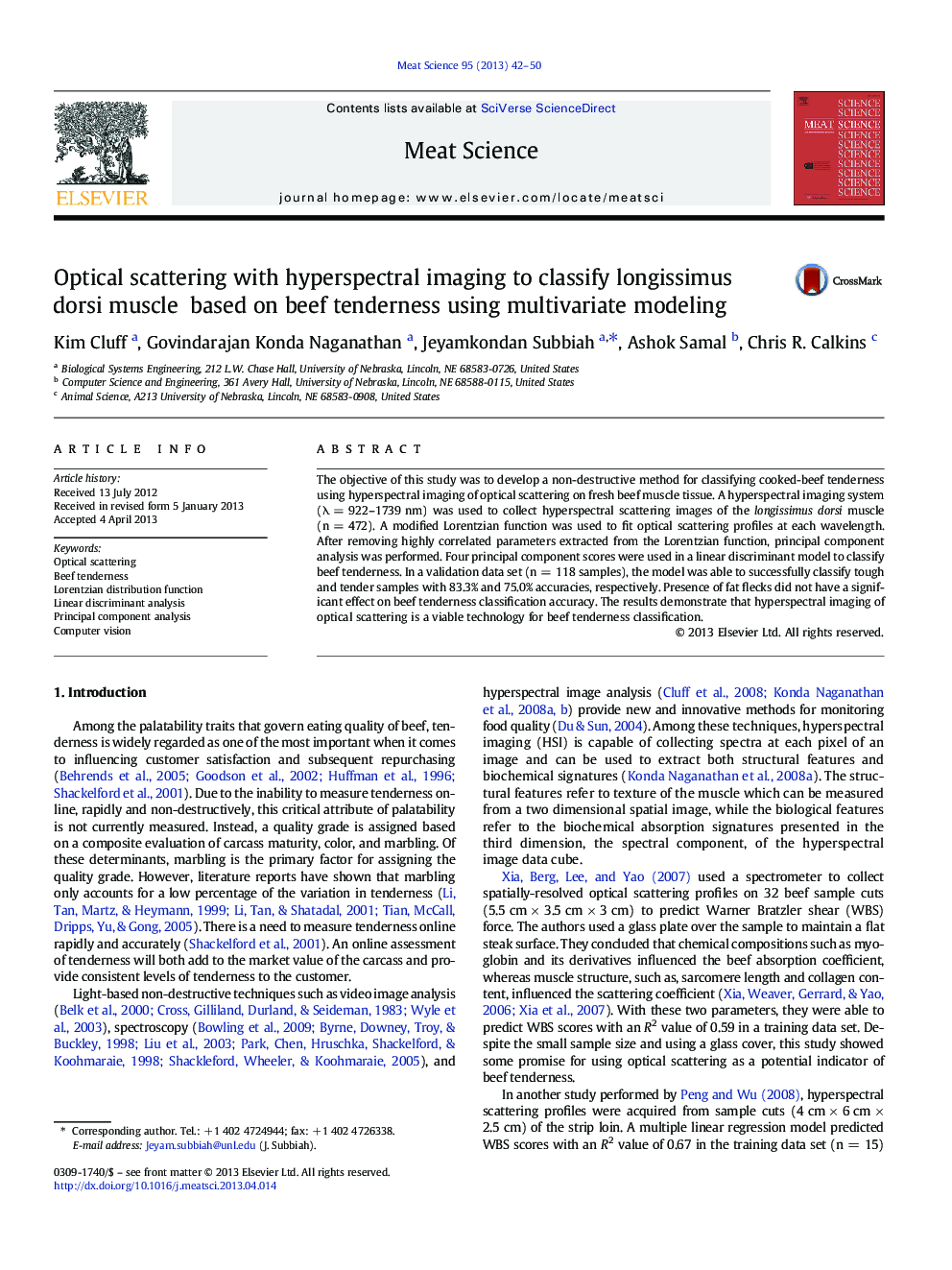| Article ID | Journal | Published Year | Pages | File Type |
|---|---|---|---|---|
| 5792309 | Meat Science | 2013 | 9 Pages |
â¢Presence of fat in optical scattering profile does not decrease the model accuracyâ¢PCA characterizes the relationship between light scattering and tendernessâ¢Hyperspectral imaging of optical scattering holds promise for tenderness prediction
The objective of this study was to develop a non-destructive method for classifying cooked-beef tenderness using hyperspectral imaging of optical scattering on fresh beef muscle tissue. A hyperspectral imaging system (λ = 922-1739 nm) was used to collect hyperspectral scattering images of the longissimus dorsi muscle (n = 472). A modified Lorentzian function was used to fit optical scattering profiles at each wavelength. After removing highly correlated parameters extracted from the Lorentzian function, principal component analysis was performed. Four principal component scores were used in a linear discriminant model to classify beef tenderness. In a validation data set (n = 118 samples), the model was able to successfully classify tough and tender samples with 83.3% and 75.0% accuracies, respectively. Presence of fat flecks did not have a significant effect on beef tenderness classification accuracy. The results demonstrate that hyperspectral imaging of optical scattering is a viable technology for beef tenderness classification.
